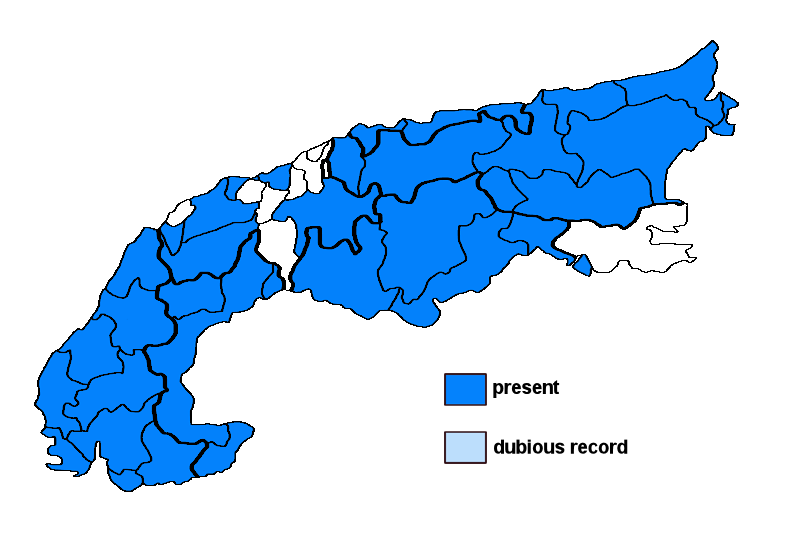Gyalolechia flavovirescens (Wulfen) Søchting, Frödén & Arup
Syn.: Callopisma aurantiacum (Lightf.) A. Massal. var. flavovirescens (Wulfen) A. Massal., Caloplaca aurantiaca (Lightf.) Th. Fr. var. flavovirescens (Wulfen) Th. Fr., Caloplaca aurantiaca (Lightf.) Th. Fr. var. inalpina (Ach.) H. Magn., Caloplaca erythrella (Ach.) Kieff., Caloplaca flavorubescens (Huds.) J.R. Laundon subsp. flavovirescens (Wulfen) Clauzade & Cl. Roux, Caloplaca flavovirescens (Wulfen) Dalla Torre & Sarnth., Lecanora erythrella (Ach.) Ach., Lichen flavovirescens Wulfen, Placodium aurantiacum (Lightf.) Anzi var. flavovirescens (Wulfen) Hepp, Placodium aurantiacum (Lightf.) Anzi var. inalpinum (Ach.) H. Magn.
Lichenised.
Substrate: calciferous rocks, intermediate rocks (such as calciferous schists)
Altitudinal range: from the mesomediterranean belt (potential vegetation: evergreen broad-leaved forests dominated by Quercus ilex) to the alpine belt (potential vegetation: treeless Alpine grasslands and tundras, to the lower limit of perennial snow and the equilibrium line of glaciers)
Note: a mainly temperate species growing on weakly calcareous sandstone and calciferous schists, on boulders and walls, with optimum at relatively low elevations; widespread throughout the Alps.
Austria: Vorarlberg; Tirol; Salzburg; Kärnten; Steiermark; Oberösterreich; Niederösterreich (incl. Wien); Burgenland; Germany: Oberbayern; Schwaben; Switzerland: Bern; Graubünden; Luzern; Schwyz; Vaud; Valais; France: Alpes-de-Haute-Provence; Haute-Alpes; Alpes-Maritimes; Drôme; Isère; Savoie; Haute-Savoie; Vaucluse; Var; Italy: Friuli; Veneto; Trentino Alto Adige; Lombardia; Piemonte; Valle d'Aosta; Liguria; Slovenia: Trnovsky Gozd;





